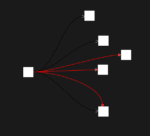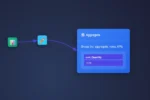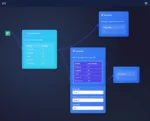In a digital landscape where milliseconds make the difference between a delightful user experience and a catastrophic system failure, designing for ultra-low-latency in stream ingestion pipelines is no longer optional—it’s a strategic necessity. At Dev3lop LLC, we view every nanosecond as an opportunity for competitive advantage. As businesses demand faster insights, real-time analytics, and seamless integration of diverse data streams, we help decision-makers rethink their approach to data engineering, leveraging our advanced ETL consulting services to architect pipelines that are agile, efficient, and resilient. What follows is an exploration of the technical and architectural principles guiding the design of modern, ultra-low-latency stream ingestion systems—enabling organizations to act in the moment rather than react after the fact.
The Fundamentals of Stream Ingestion Architecture
To achieve ultra-low-latency ingestion, we must start with a sound architectural foundation. Traditional batch-based ETL pipelines are inherently unsuited for sub-second processing; instead, modern organizations employ asynchronous orchestration and event-driven architectures that minimize queuing and unnecessary intermediaries. As we highlight in our guide to asynchronous ETL choreography, the shift towards decentralized, loosely coupled services allows for parallelism and rapid data propagation. Layering in ephemeral computing resources—as discussed in our analysis of ephemeral computing for burst analytics workloads—gives your pipeline the surge capacity needed for traffic spikes without the drag of persistent, underutilized resources. A robust, ultra-low-latency architecture is characterized by distributed streaming platforms (like Kafka or Pulsar), in-memory processing engines, and stateless microservices that work in concert to minimize bottlenecks at every stage. This holistic architectural philosophy frames our approach in helping organizations achieve real-time data responsiveness.
Key Design Patterns for Minimizing Latency
Designing for minimal latency relies on a few proven patterns. First, data locality—deploying processors as close as possible to data sources—slashes network transfer times. Second, leveraging upsert patterns in your data storage layer, as we explain in upsert implementation patterns in various data stores, helps avoid costly overwrites and ensures data accuracy with speed. Stateless, horizontally scalable consumers mean work is not dependent on session stickiness or shared state, boosting parallelism. The use of event-time processing instead of processing-time improves order guarantees without blocking real-time arrival. Moreover, by integrating an observability mesh for proactive monitoring, you gain deep visibility into every microservice and data stream, enabling instant detection and mitigation of latency spikes. These patterns combined help developers engineer a streaming pipeline as nimble as it is powerful—making ultra-low-latency streaming a reality for the enterprise.
Real-Time Monitoring and Visualization Strategies
Emphasizing ultra-low-latency ingestion means little without equally real-time operational monitoring and interactive reporting. Innovations in dashboarding and visual analytics allow decision-makers to observe the pulse of their streaming data—and act instantly. As discussed in our deep dive into building a real-time dashboard with Streamlit and Kafka, coupling low-latency pipelines with responsive UIs ensures visibility into emerging patterns and anomalies. For more nuanced scenarios, employing animated sparklines for real-time data monitoring can turn raw streams into actionable signals. The fine art of effective visualization, crucial for avoiding decision fatigue, is explored in our list of 10 tips for creating effective data visualizations. Integrating these practices into your streaming architecture facilitates continuous feedback loops; this symbiosis between ingestion and visualization allows your teams to make evidence-based decisions at the speed of business reality.
Scalability, Performance Tuning, and Future-Focused Techniques
Ultra-low-latency architectures must scale as data velocity grows—without sacrificing speed or reliability. Leveraging proven techniques for handling streaming data at scale, from elastic autoscaling to tiered storage, keeps throughput high and latency low. Approximate query processing, explored in approximate query processing for interactive data exploration, unlocks sub-second interactive analysis even as dataset volumes explode. Whether you’re adopting edge computing artifacts to reduce core-to-edge roundtrips or advancing dashboard design with Figma-powered layout tracing (the art of tracing dashboards using Figma and PowerBI), a successful streaming strategy invests in both infrastructure and user experience. Forward-thinking organizations recognize that pipelines are living systems. By blending automation, smart monitoring, and adaptive engineering, your pipeline will deliver transformative value long into the future. Let Dev3lop LLC be the partner to guide your next leap in ultra-low-latency ETL innovation.
Thank you for your support, follow DEV3LOPCOM, LLC on LinkedIn and YouTube.

























